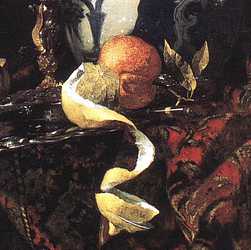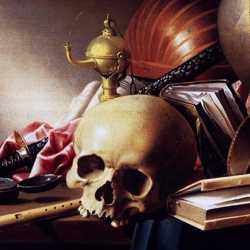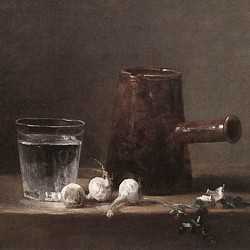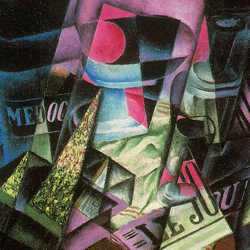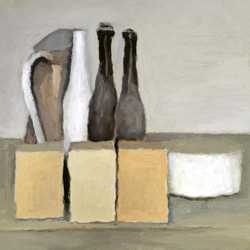Still Life Paintings by Henri Matisse
Henri Matisse was one of the great masters of still life in 20th century art. He was a founding member of 'Les Fauves', a group of artists who enjoyed painting pictures with outrageously bold colours.

HENRI MATISSE (1869 -1954)
'The Goldfish', 1912
(oil on canvas)
Henri Matisse was one of the great masters of still life in 20th century art. Artists are usually seen as people of their own time who reflect the world they live in. Not so Matisse. He lived through an age of unprecedented technological growth that totally reshaped the world in the 20th century. Matisse also witnessed some of humanity's darkest moments: two world wars, the holocaust and the dropping of the atomic bomb to name but a few. Yet despite his exposure to this era of uncertainty and change, there is nowhere in his work that can you find any hint of protest, an ideological stance, or even any reference to the momentous events of his time. His art is oblivious to the problems of the world and he retreats behind the walls of his artistic vision to a sheltered haven where only a sense of comfort and joy exist. Matisse said that he wanted his art to have the same effect as a comfortable armchair on a tired businessman and many of the paintings he left us seem to be the view from that armchair.
'Les Fauves'
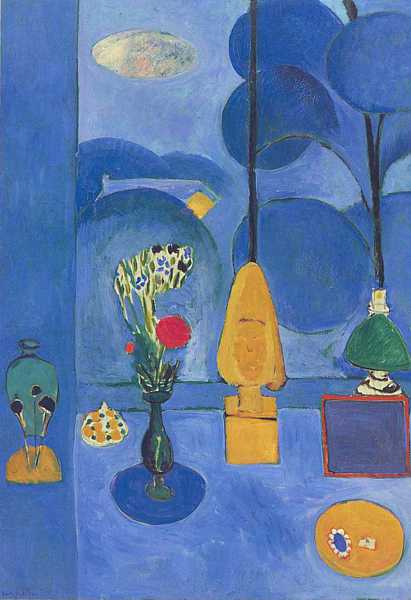
HENRI MATISSE (1869 -1954)
'The Blue Window', 1912
(oil on canvas)
Matisse was a founding member of 'Les Fauves', a group of artists who enjoyed painting pictures with outrageously bold colours. Their style of painting was called Fauvism, derived from their title 'Les Fauves', which meant 'wild beasts' in French. It was coined by the art critic Louis Vauxcelles who was amused by the exaggerated colour in their art.
The artistic establishment of the day were offended by their paintings as they respected control and restraint in the use of colour. 'Les Fauves' believed that colour had a spiritual quality which linked directly to your emotions and they loved to use it at its highest possible pitch. The function of colour in their paintings was not to describe their subject matter, but to express the artist's feelings about it. Their ideas liberated the use of colour for future generations of artists who ultimately explored colour as an abstract subject in its own right.
'The Egyptian Curtain', 1948
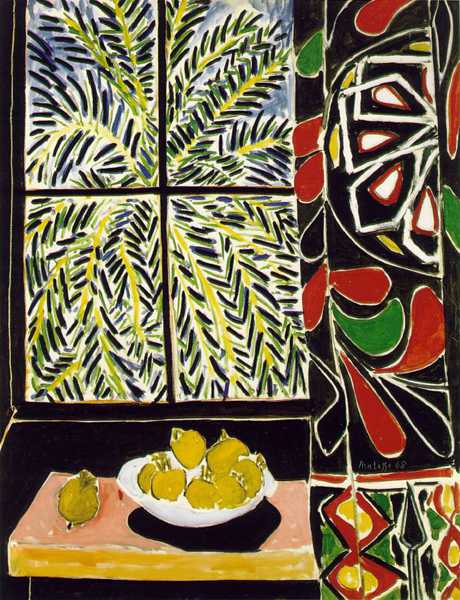
HENRI MATISSE (1869 -1954)
'The Egyptian Curtain', 1948
(oil on canvas)
The Egyptian Curtain' is a wonderful example of Matisse's still life painting at the height of his powers. It is a work whose colour radiates sunshine. Matisse understood that the more you reduced and simplified the drawing of an image, the more you could increase the expressive power of its colour. He would extract a few of the key colours from a scene and use them to intensify our experience of the subject. Matisse also realized that the simplification of his drawing and the looseness of his brushwork added to the joy and vitality of the work.
Although 'The Egyptian Curtain' is a simplified and stylized Fauvist image, it is still an accurate reflection of the way we look at things. If you stand inside a room on a sunny day and stare through the window at something outside, your eyes become adjusted to the brightness of the sunlight. Then, when you turn to look at something inside the room, you are partially blinded while your eyes adjust to the change of light. By contrasting the sunlit objects in 'The Egyptian Curtain' with its dark interior, Matisse uses the same optical phenomenon to increase the luminance of his colour to an extreme pitch. The palm outside explodes in a sunburst against the black window frame and the vitality of its brushstrokes emphasise the energy of its light. This colorful drama continues inside the room through contrasts of the fruit bowl and curtain with the dark interior.
The tone and colour of the painting, elements traditionally used by artists to describe form and depth, are simplified and flattened to amplify their expressive power. To counterbalance this abstraction, Matisse returns to traditional methods in order to define the organization of space in the painting. The illusion of depth is conveyed by the shape of the table, the ellipse on the bowl of fruit and the suggestion of a wall to the left of the window, whose angles all roughly conform to the rules of perspective drawing.
Depth is further suggested by the scale and position of the objects in relation to one another. The curtain, which is the largest object and emblazoned with the boldest shapes, fills the foreground of the painting. It overlaps both the table and the window indicating that it is the nearest object to the viewer. The position of the window as the highest object in the picture suggests that it is in the background and subsequently the fruit bowl and table take up the middle ground. The tone and colour of the painting may have been flattened for expressive effect but its shapes are arranged in a hierarchical order to allow a spatial reading of the work.
Henri Matisse Notes

HENRI MATISSE (1869 -1954)
'Self Portrait', 1944
(pen on paper)
Henri Matisse was one of the great masters of 20th century art.
-
Matisse was a founding member of 'Les Fauves', a group of artists whose style was called Fauvism.
-
Matisse simplified his drawing and exaggerated his colour for expressive effect.
-
Matisse believed that colour had a therapeutic power. It is said that he arranged his artworks around the bed of a sick friend so that he could benefit from their healing glow.
-
Matisse ignored the great social and historical events of the 20th century as suitable subjects for his art. Instead he explained his preference, 'What I dream of is an art of balance, of purity and serenity devoid of troubling or depressing subject matter.'
-
Matisse said that he wanted his art to have the same effect as a comfortable armchair on a tired businessman.
-
In later years Matisse was confined to a wheelchair and could no longer paint. Instead he would draw directly in colour by cutting into large sheets of colored paper which would then be collaged onto canvas. He said that, 'Cutting into color reminds me of the sculptor's direct carving.'

